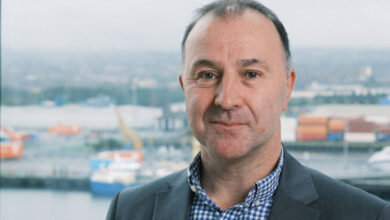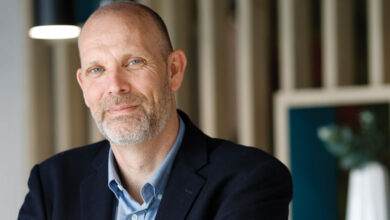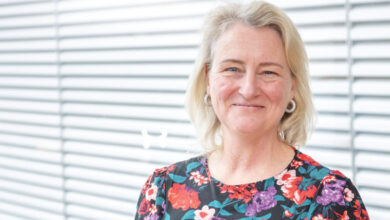The alternative
 While not a traditional political sticking point, ICT has become a vital part of the public sector. Ryan Jennings looks at what a Conservative government could have in store.
While not a traditional political sticking point, ICT has become a vital part of the public sector. Ryan Jennings looks at what a Conservative government could have in store.
The Conservatives’ technology document ‘Make IT Better’ was released alongside a leaked copy of government proposals in December but offers only little as to how that party would change technology’s path.
That the document was published in the name of Philip Hammond, the Shadow Chief Secretary to the Treasury, could be a sign of things to come.
It centres on the problems associated with the projects overseen by Labour, most especially in the last eight years. In that timeframe, the Tories claim that the Government has spent £108 billion on ICT which, in their view has not delivered.
In the past decade there have been 20 “multi-billion pound ICT-led projects” and yet, it adds, “for the most part the experience of the public has not matched the public money expended”.
The value for money argument centres on five main points.
Revenue and Customs’ IT bill, the Tories say, has trebled in four years. One such example is the HMRC contract for its IT services, which has risen from the 2003 estimate of £2.83 billion over 10 years to £8.5 billion in 2007. The profits of Aspire, the company in question, could add up to £1.1 billion by the project’s completion according to the Opposition.
The NHS computer system in 10 health authorities in England, intended to be a three-year project and originally budgeted at £2.3 billion, has taken 13 years and cost £12.7 billion, the Tories say.
Job Centre Plus and the Home Office probation service system, which have no presence in Northern Ireland, have all run overtime and over-budget, as have Foreign Office communications.
The first of those, a £360 million customer management system “lets down vulnerable benefit claimants”. According to the report, in January 2006, 40 per cent of claims for new incapacity benefit, income support and jobseeker’s allowance were not being processed by the system, leading staff to process claims manually. In March that year the Commons Work and Pensions Committee said that Job Centre customers “suffered a catastrophic failure”.
At the Foreign Office, the Tories say that the new communications network cost £60 million over budget. Originally meant to cost £180 million and ‘go live’ in May this year, the ‘Crams’ probation system was initially priced at £4 million. The document contends that the cost has escalated to £11 million, with room still for growth.
It also touches on problems pointed out by both the Rowntree and Hannigan reports. The first, entitled ‘Data Nation’, concluded that “a quarter of the public sector databases reviewed are almost illegal under human rights or data protection law [and] should be scrapped or substantially redesigned”.
Among those are the national DNA database, which has been subject to civil liberties groups’ scrutiny, the national identity register, which the Tories plan to scrap, and 2,300 other systems which the report says are not security accredited.
“Mega” projects are also too plentiful, the report says. Such projects can become so complex that by the time they are delivered, the actual technology could be out-dated. Indeed, according to a 2007 report by ICT researchers Kable, nine private companies accounted for 60 per cent of public spending on ICT.
Labour’s ‘legacy’ is viewed by the Tories as statist. The report says Labour’s tendency is “for a government that still believes that state action is the answer to every problem; that topdown centralised command and control still works”.
Amid losses of learner drivers’ and benefit claimants’ data as well as desk files at the Home Office and the theft of Ministry of Defence laptops, the Tories say that Labour have led a culture of “an institutionally lax approach to the citizen’s data”.
‘Practical steps’
In response to that, a Conservative government would reach first for either an off the shelf product or indeed an open source product, which saves both development and licensing costs. Where that product is considered inferior, a third party company will be considered. The Tories say that not only do the “mega” projects leave greater scope for risk but they may also cause an “excessive dependence” on a small number of suppliers.
In the short-term the Tories would postpone existing and upcoming procurements so that the above principles could be applied.
The party would also impose a period of enhanced central control given the state of financial crisis. An early step, it says, would be to build an ICT register, including all the technology-related assets across the government estate.
The Government Chief Information Officer, whose office would also be given extra powers, may also be allowed to form a development team to “explore cheap and cheerful solutions to the government’s requirements”.
It is also planned that civil servants would have more freedom to tell a minister that a project could carry “unjustifiable risks and costs”. Increased accountability, in short, is the phrase of the day.
It also says that the party would “expect” to publish all ICT contracts, setting them against domestic prices and foreign public sector contracts – assuming other countries make that information available. The procurement process would also be altered to begin with simpler, low-cost solutions.
All public sector IT projects would, under the Tories, be subject to tougher conditions. All government departments and agencies would be required to publish online every item of ICT spending over £25,000, with local councils having to publish contracts worth over £500. Indeed any government ICT project should also not exceed £100 million in total.
To make sure ICT has a say at the top table, the Conservatives would also recommend that at least one person at the top table has “strong” ICT experience.
Gateway reviews, which are published at “key decision points”, and meant to either give assurance that a project will or will not progress to the next stage, will be put online for the public to scrutinise.
There is also a commitment to introduce a new ‘right to government data’ so that the public could ask to see any government dataset, an approach already implemented by Barack Obama.
In January the Government launched the data.gov.uk website, which makes government data available for reuse.
The Tories’ ICT policy website (www.makeitbetter.org.uk) is accepting comments on the party’s proposals and will be live for the foreseeable future.
A technology manifesto
In a separate document, the Tories have published their technology manifesto.
Among the main points, it promises to publish online the names and salaries of all central government and quango staff earning over £150,000, as well as details for the 35,000 most senior civil servants.
Councils in England and Wales will also be required to publish the names of staff there who are earning over £60,000.
There is also a commitment to extend superfast 100 mbps broadband “across most of the population”.
The top STEM graduates from English universities will also be encouraged to go into teaching. Their student loans will be paid off and graduates will be offered “competitive” salaries.
Open source technology should be the first port of call, the party says. It suggests that such a change would allow large contracts to be broken into smaller parts, thereby reducing risk. More small business will then be able to bid for government IT contracts.
Alternative ideas
- Impose a moratorium on existing and upcoming procurements to assess value for money
- Establish a presumption that ICT projects should not exceed £100 million in total value
- Encourage use of open source software
- Review large databases and scrap ID cards
- Open up more access to government data





